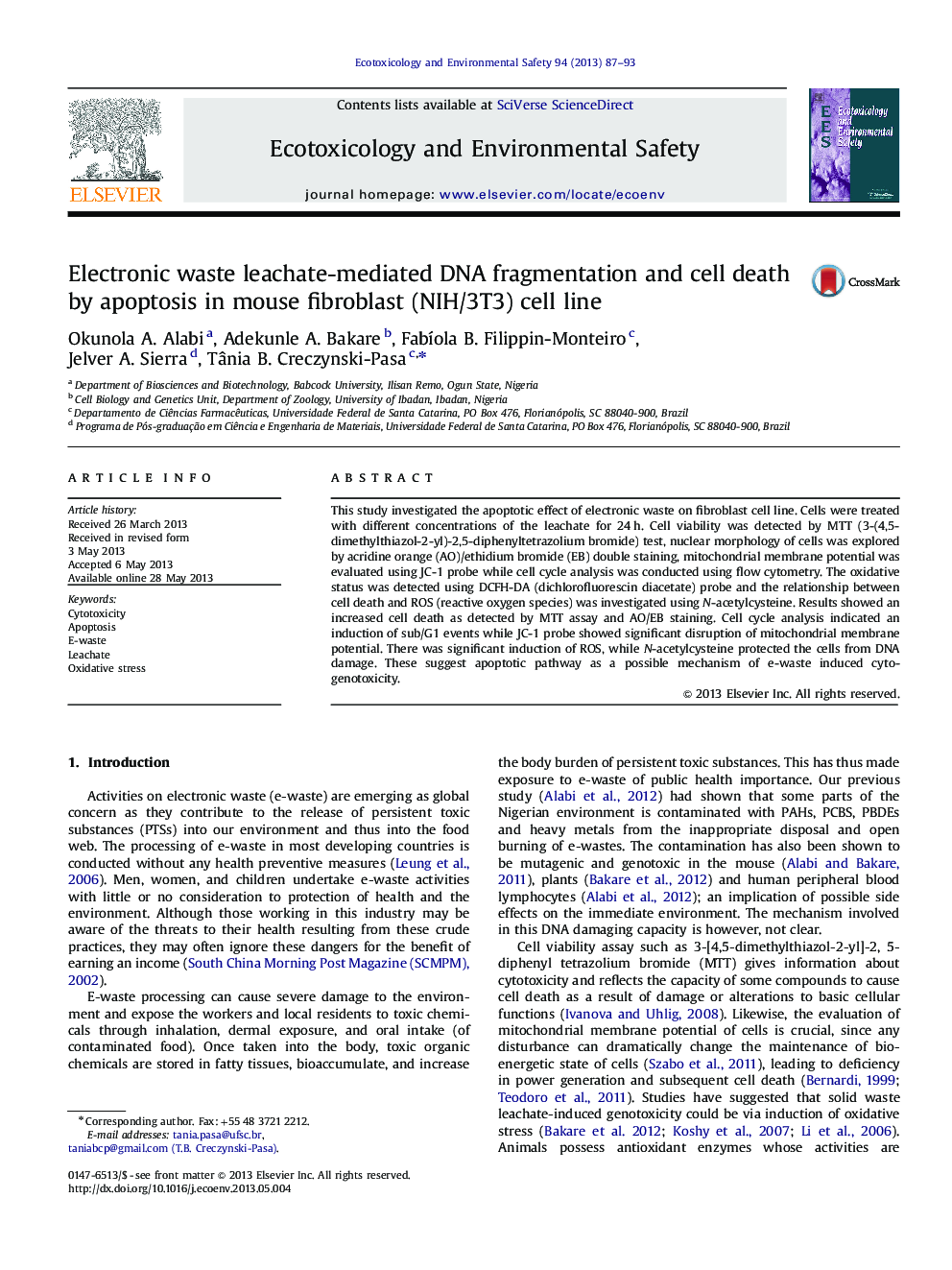| Article ID | Journal | Published Year | Pages | File Type |
|---|---|---|---|---|
| 4420488 | Ecotoxicology and Environmental Safety | 2013 | 7 Pages |
•E-waste leachate disturbed the cycle of a fibroblast cell line.•E-waste leachate induced cell death in a fibroblast cell line.•Mitochondrial membrane disruption was observed in e-waste exposed cells.•NAC protected DNA damage by ROS generated by e-waste exposed cells.•Apoptotic pathway as a possible mechanism of e-waste induced cytotoxicity.
This study investigated the apoptotic effect of electronic waste on fibroblast cell line. Cells were treated with different concentrations of the leachate for 24 h. Cell viability was detected by MTT (3-(4,5-dimethylthiazol-2-yl)-2,5-diphenyltetrazolium bromide) test, nuclear morphology of cells was explored by acridine orange (AO)/ethidium bromide (EB) double staining, mitochondrial membrane potential was evaluated using JC-1 probe while cell cycle analysis was conducted using flow cytometry. The oxidative status was detected using DCFH-DA (dichlorofluorescin diacetate) probe and the relationship between cell death and ROS (reactive oxygen species) was investigated using N-acetylcysteine. Results showed an increased cell death as detected by MTT assay and AO/EB staining. Cell cycle analysis indicated an induction of sub/G1 events while JC-1 probe showed significant disruption of mitochondrial membrane potential. There was significant induction of ROS, while N-acetylcysteine protected the cells from DNA damage. These suggest apoptotic pathway as a possible mechanism of e-waste induced cyto-genotoxicity.
Graphical abstractFigure optionsDownload full-size imageDownload as PowerPoint slide
